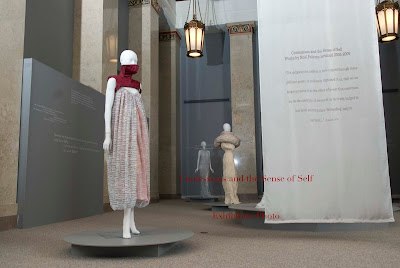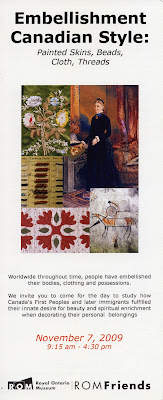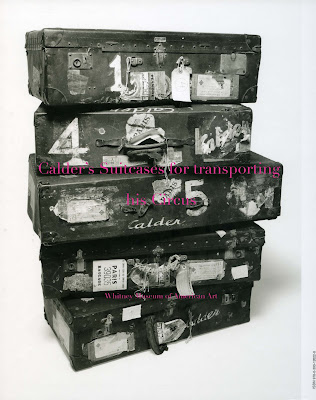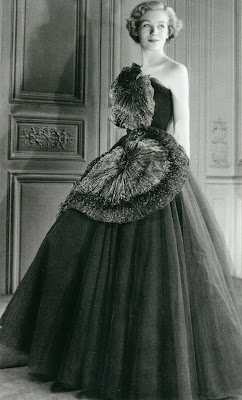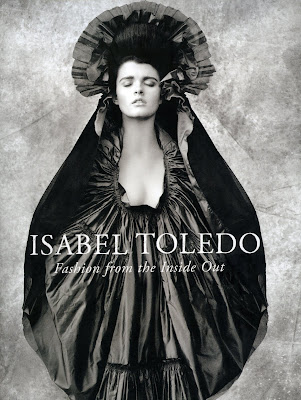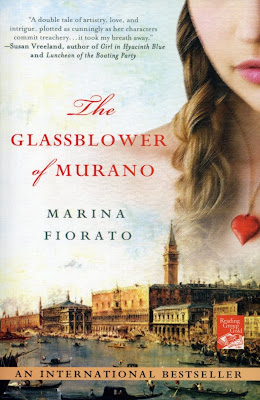 Photo of Isabel Toledo by Ruven Afandor In a world that often measures success by fame, I find it utterly refreshing to discover that Isabel Toledo walks her own path. She pursues her own goals, does not follow the trends, and does not show at Fashion Week. She does not consider herself an artist or designer, and prefers to describe herself as a "seamstress" since she loves "the technique of sewing more than anything else." How radical and how original!
Photo of Isabel Toledo by Ruven Afandor In a world that often measures success by fame, I find it utterly refreshing to discover that Isabel Toledo walks her own path. She pursues her own goals, does not follow the trends, and does not show at Fashion Week. She does not consider herself an artist or designer, and prefers to describe herself as a "seamstress" since she loves "the technique of sewing more than anything else." How radical and how original!Being in a reflective mood about my own work, I've taken to heart some of the lessons I learned from reading the book
"Isabel Toledo: Fashion from the Inside Out" by Valerie Steele and Patricia Mears.
1. Be true to yourself.Unlike most fashion designers, Isabel Toledo does not sketch. She conceives of a garment in her mind and works to manipulate fabric to realize her vision. Her husband, Ruben Toledo, an artist and fashion illustrator, will sketch that vision for her based on her description and continues to sketch for her as the garment takes form.
The strikingly original clothing that comes from Isabel Toledo's studio does not follow trends. She once said "
My inspiration this season was having no inspiration. I just worked and it came from the function. It's not as easy as having a concept".
Typically, fashion designers have to have a huge commercial enterprise to be considered successful. Isabel Toledo's small atelier of about twenty workers produce only about 300 finely crafted garments per season.
2. Acclaim is not a measure of success.At various points in her career, Isabel Toledo has been heralded as "
New York's best new designer" (New York Talk), "
one of America's 7 rising stars of fashion" (Vogue), "
most inventive designers of the under-30 generation" (NY Times). However, the Fall 1989 collection was dismissed by WWD as an "
artsy horror show". Other collections have been described as
"quirky" and "
cultish". In her own words, Isabel says she prefers to fly "
under the radar."
3. Setbacks are inevitable.In 2005, Isabel Toledo was one of ten finalists for the Vogue/CFDA Fashion Fund award, but "
to the shock of observers", Isabel lost and was not even chosen as a runner-up.
In 2006, it appeared that Isabel Toledo was on the cusp of financial security and success when she was hired as the new creative director of Anne Klein. In spite of rave reviews and strong sales for her debut collection in 2007, the changes in management at Jones Apparel Group resulted in the brand being discontinued and Isabel received a pink slip.
In spite of these public failures, "Toledo does not view herself as an unknown entity or an underdog." She continues to walk her own path, swimming against the tide of fashion.4. Have a sense of humour.Looking at the photograph of Isabel above and seeing some of the surrealist type of designs that Isabel Toledo has created over her career (including one fabulous hair clip with eyes to convey "eyes at at the back of one's head"), I would have to hazard a guess that Isabel has a sense of humour. This probably served her well in the many setbacks she faced, keeping her grounded and laughing at the absurdity of life!
Perhaps Glenda Bailey, editor-in-chief- of Harper's Bazaar, said it best:
"Isabel Toledo is a lover of order - who finds inspiration in anarchy. She is a mathematical genius - who makes it look like magic. She is a pragmatist - who creates the clothes that dreams are made of. Isabel's work is more than fashion and it's more than life. Perhaps that's because, to Isabel, art and fashion are life. And no one makes life look better."The show "
Isabel Toledo: Fashion from the Inside Out" at the
Fashion Institute of Technology closes on Saturday, September 26, 2009.


















